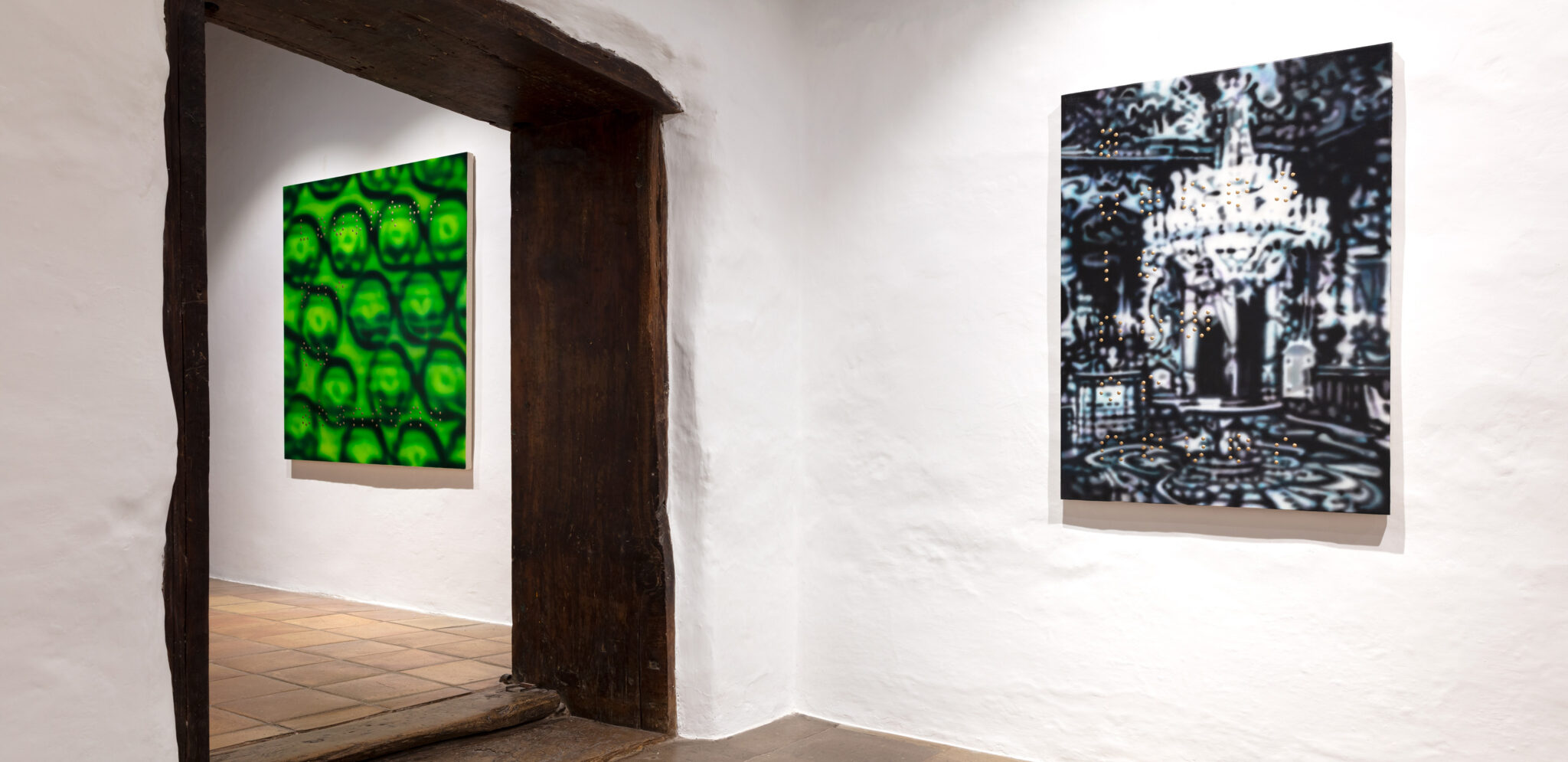13 de December de 2021
Play Video
SPANGLISH DRAMA
(or a way of being unitive according to Raúl Cordero)
To Chick Korea (RIP)
Listening to your Spain
If anything has the ability to mutate, it’s language. Through linguistic drifts and deviations, languages are continually being enriched through a process of mixing that generally derives from the transgression or colonisation of borders. Rarely does this occur without violence, but when it does, it is through a process of sedimentation, as layer settles upon layer.
It would be interesting to return to this deconstructing notion of what we are through the understanding that we are all mixtures and blends, now that it has become so fashionable to think in terms of an essentialist, racialised identity, one that is ultimately stereotyped, socially-agenced, polyglot and decolonial; now that “being from the Tropics” (from the “global south”) is in tune with the epicurean need to live intensely after the global scare that merely served to highlight the obvious: “we are fragile.” And also ephemeral, like delicate cigarette papers that burn as they oxidise while exhaling and expiring oxygen and carbon dioxide, with difficulty. We are clearly ephemeral beings because all life is. A universalist, pan-ecumenical conception, best explained by the recently deceased Chilean biologist and philosopher Humberto Matucana, through his idea of “autopoiesis”, the capacity of the planet and of us as a species to be an organism that is in constant construction, being built biologically, neuronally, psychologically, and thus, as a mass of individuals that behaves like a living being. That which we call “Société”.
For within that organism, languages have evolved exponentially in the last fifty years since the planet became globalised. Everything today is language. “We are an echo (post-Umberto) neither as apocalyptic or as integrated” -paraphrasing De La Nuez and Roma-, we are instead rhizome in a Deleuzean sense. A social animal without organs, with the organs of the senses hyperbolically hypertrophied through the overdoses imposed by modern life through the everyday barrage of information. Everything is text, picture, reverberation, hollow sound, signs without mystery, transparencies. Tautology, everything is copy and repetition, an infinite carousel. A signifying fragment that swoops down and pummels itself. It becomes body, memory.
Returning to the echo. In relation to this idea of vibration, all of Raúl Cordero’s work, even without his knowing it, is structured through a model system that appears to have been devised by Severo Sarduy. His entire oeuvre seems to me to be a retombeé, a round trip that stands on end and escapes from itself again and again; a baroque breath held in the air, trying to grasp it through ritual slowing down that is the exercise of art, as a reflective and contemplative tool, endowed with knowledge and sensoriality(1).
Perhaps because much of his work is about lack or absence. For those who understand music in its entirety, absences are silences, empty spaces to be harnessed, to create a vacuous sound; but absence is also reverberation, much more so in quantum times. Ask the astrophysicists. Raúl engages them in dialogue, reverberating(2). Vibrating like them, from drop to drop, atom to atom, particle to particle falling on the flat medium.
While all individuals in my lifetime have experienced the process of what was once watertight becoming porous, the mixing of impurities, the transfiguration of a monolithic universe into a fractal hybrid one. We are experiencing this in a traumatic way in one way or another, but for Cordero it was a natural process. Maybe because he was already bilingual. And because from very young age he understood the world as a compendium of fragments, never a whole, because the whole is always personal. Unitive. Untested beyond its absorbing limits.

There are artists who are fully aware that everything in art -or rather, all art itself- is an intelligent game of languages. Raúl Cordero is one of them. In his work, traditional and contemporary languages flow together like streams of a plentiful river, debating and completing each other. Spanglish Drama, is his first approximation to "images and speeches" that remind him of his origins and remind us where the poetic hides.
Here is a sample.
Omar-Pascual Castillo
Raúl is a white man raised in a black neighbourhood, El Cerro, a neighbourhood we share, with a musical ear tuned into Afro-transatlantic rhythms(3), academically trained in Fine Arts and Graphic Design in Havana and Amsterdam. He has lived in Stockholm, New York, his hometown and Mexico City, a creative personality that behaves like a palpable amalgam, vulnerable, able to mould himself to his time, piercing it through with his past, his tropicality that becomes learned sensuality, natural elegance, the similarity between the Cuban Royal Palm and Hobbema’s pine forest. A centrifugal capacity that in his present work manifests as a mature conclusion where we can see the dexterity of visual sense and verbal confabulation as a success, sifted by the strength of conceptual critical thinking of high poetic flights of fancy and overwhelming formalistic accuracy. Thanks to his understanding of himself as a polyglot.
Hence, Raúl allows himself the luxury of approaching Spain from the distance of media, painting a series of “stolen images” of virtual videos that promote the Royal Palace in the country’s capital, and mixing them with nineteenth-century graphic vignettes from the press and the British publishing industry, bringing together two gazes from the past, one updated, sacralised through the advertising technique of virtual marketing, and the other, turning to the nostalgia and longing for something naive, naïf, still pure, even when this is just purely recollection. A lucid luddism that Cordero deploys because he is fascinated by the incestuous relationships between nostalgia (and its signs, distress signals)(4) and the new languages of the day to day in the 21st century. Both of these perspectives are executed using the oldest linguistic tools of visuality: painting, the dawn of which, along with several moments of maximum splendour, are definitely a source of pride in the kingdom.
Only someone who does not feel Spanish enough, a Cuban-Mexican is a perfect example, can offend in this sarcastic way the tradition and memory of painting and the memorabilia of what royalty means for our history, in our present. And he does this as a polyglot man, an artist who uses languages as and when they might benefit him in terms of a specific outcome. Knowing that nothing is more political than the poetic, he imbues them with poetic questions.
Hence, his words in light installations refer us to a kind of eternal ready-made, a renaming of the word made light; for that is what words bring: clarity, light, beauty to the things they name. Perhaps, because Raúl is a nostalgically encyclopaedic man in a technological universe, where everything that once contained something sacred has been made frivolous. And everything is former. We are all a former something, a former partner, former spouse, former Cuban, former Caribbean, former American, former photographer, former video artist, former painter (5).
And there, in that dramatisation of disappearance, in that looking back but stopping the moment you glance back over your shoulder and look to the side, there, Cordero finds a healing fugue, a parodying diversion that relaxes him away from the absent-minded and distracted disproportion of his contemporaries, caught up amidst the grinding of urban music, media narcissism and filial activism, with their predilections and their phobias, forgetting the shades of grey found among those who choose the extremes.
There he remembers that it is in the Hispanic Harlem neighbourhood of New York City, a place he does not belong, where he feels most at home. Where his Puerto Rican, Dominican and Cuban friends live together in a strange peace of admiration and respect and infinite chatter, infinite flexing, infinite seduction and cockiness, where Salsa music is sung in Spanglish, and a Rum and Coke, the famous “Cuba Libre”, is paid for in coin of the realm. But one feels that in such a blend there is a kind of future, a shadow of what’s to come. A future that only polyglots – like Cordero- can dedramatise, turning it into a baroque delight. A baroque created through new languages, becoming neo-baroque, a mechanism of reinvention that he still structures like a unitive artist. Someone who looks us in the eye and says:
-Si solo tienes tu amor… you don’t need anything else babe. So…No more drama! Fall in love with that!
Omar-Pascual Castillo
Las Palmas de Gran Canaria, Spain
______________________________________
(1) Indeed, Cordero was the only Cuban artist invited to take part the project Barroco y Neobarroco. El infierno de lo bello, DA2, Salamanca, 2005, co-curated by Javier Panera, Paco Barragán, and myself
(2) Little has been said of Raul’s interest in science. A great deal has been written about his investigations into image, video art, digital art, his experimental and avant-garde status (he is a pioneer in Cuban video art and one of the first to participate in the NFT market), but of his philosophical and scientific readings and concerns, very little. These “particle works,” as it were, give him the opportunity to integrate all his work into a subplot, like his own life. Like all our lives, bound by quantum gravitational fields. It gives him the pretext that unites everything.
(3) In addition to being a House DJ, his main profession which allowed him to live on and off in New York at the start of the Millennium, he also has a vast collection and knowledge of Jazz and all contemporary music in general.
(4) As I said before, he is obsessed by absences. Right from his early pieces, the void, the materiality of the void, and the passage of time have been constant features in his work. Just take a look at his exhibition Todo depende del relato de 1997, held at the Wifredo Lam Centre, and this relationship with nostalgia will be revealed to us.
(5) In relation to this idea, to paraphrase Kevin Power, Raúl was a post-communist artist, post-boom Cuban art, post-modern, post-conceptual, post-exile… “He is a post-almost-everything artist,” he said. See: Raúl Cordero: viéndolo a mi manera, in the publication Raúl Cordero, by Turner Libros, Madrid, Spain. Page 201
BEHIND THE ARTWORK
Fourth chapter of the Behind the art work video series in which the artist talks about his creative process.
PRESS
BUENOS DÍAS CANARIAS
Featured in the program Buenos días Canarias of Televisión Canaria.
Written press
Mutual art
Article in the portal mutualart.com
EL Día
Article in the newspaper El Día - December 18, 2021
diario de avisos
Article in Diario de Avisos newspaper - December 17, 2021
with the collaboration of


